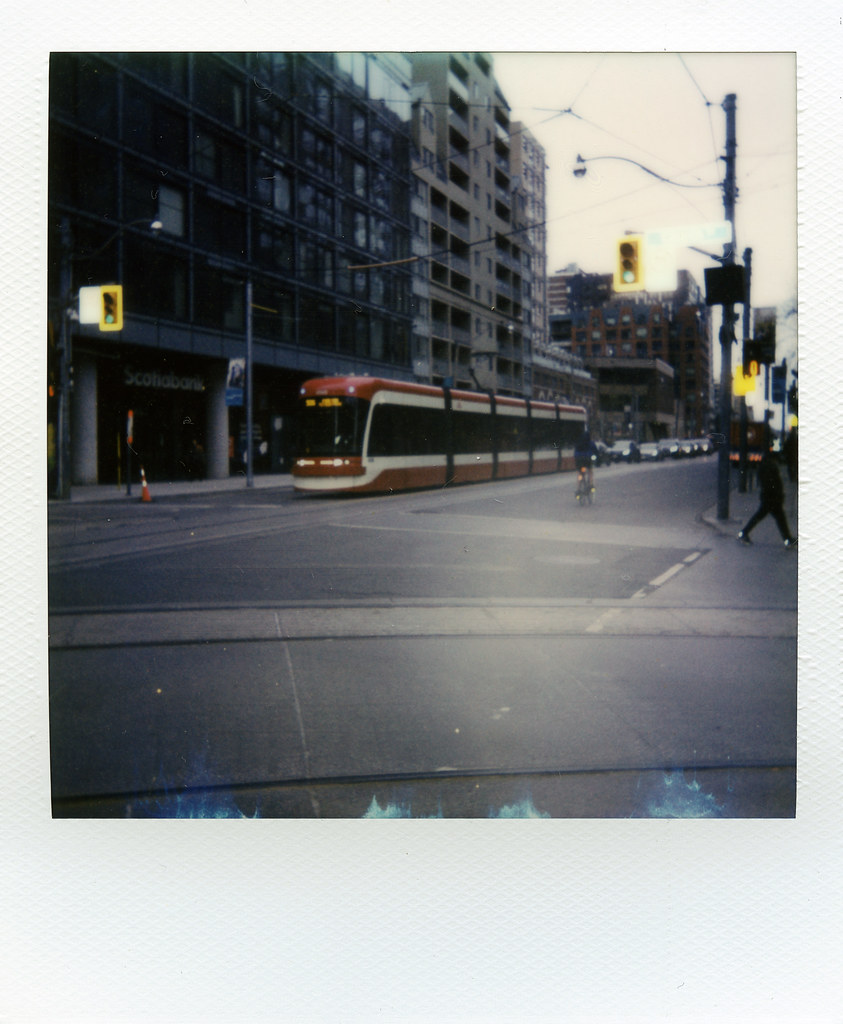When it comes to instant film, there isn’t much that draws me to the medium. Other than the fact that it’s an instant film, it’s amazing that after Polaroid pulled the plug, someone was able to backwards engineer and recreate it. And I’ve been with them since the beginning from those early steps and some pretty terrible prototypes. And while Impossible Project turned to Polaroid Originals to reclaim the Polaroid name, the spirit of this has remained and started to produce normal repeatable products. Sure they may have lost their spirit of adventure, having a colour instant integral film in the 21st Century is something to celebrate.
Film Specs
Type: Colour Instant Integral
Film Base: Acetate (?)
Film Speed: ASA-640
Formats Available: Type-600, I-Type




Colour Rendition
Don’t expect perfect colour replication from Color600, although it has come a long way from those first packs of SX-70 colour films. There was a significant improvement when they started to get into the Type-600 films. But the colour replication, like image quality, is directly tied to how good and even is the light. The biggest failure of these films is that they lack dynamic range, are tied to a camera with a fixed aperture and often rely on flash more than it should. If everything is just right, you’re going to get bright colours, the strongest being your reds and blues, but despite that, I find that the film has an overall yellow bias. However, that can be fixed in post-processing. If the subject is close and has a good amount of light, you’ll be treated to a rich deep contrast, especially with glass optics cameras. Still, even with plastic lenses, you get an okay saturation level.




Image Quality
You’re in for a real treat when you hit the jackpot and have perfect lighting conditions. You’re in for a real treat with Color600. There’s nothing wrong with the film; I find it inconsistent to have consistent results. The biggest detractor is the lack of dynamic range that when the camera decides to pop the flash, you’re going to lose a lot of the image. I included one such photo in this review in the first set; the shadows are completely lost because of my distance from the subject and the camera popping the flash. But despite this one glaring issue, when things go right, they go right! While sharpness and contrast depend on the camera you’re shooting the film with, when you have it in a quality camera like my Polaroid One that does have a good lens, you have a decently sharp image with good contrast. While far from perfect, the images are precisely what you have expected from Polaroids, soft and nostalgic and remind me a lot of the Polaroids I saw through my elementary and middle school days. Despite the speed, the images are fine-grained and are fun to show and share.




Scanning
There is always a certain thing that is lost when scanning. The first issue with scanning is keeping the frames flat, but with a good flatbed scanner and a bit of extra weight (not too much) on the top, you can achieve decent compression. But you don’t want too much, or you may introduce newton rings, but there is a slight difference between the frame and the image area that is a bit of wiggle room. Additionally, you can use special glass to sandwich the frame. Once you have your scanning setup, you will run into the biggest downfall of these Color600, the lack of dynamic range, which makes it hard to scan and then post-process. The minor issue is what are you going to do with the frame? I’ve gone multiple ways, including the whole frame to show that it is a true Polaroid image, to make it square, cut off the chemical pack, and cropped it out entirely. Of course, keeping the frame in the scan and final edit will throw off your post-processing work as it ties into the major issue with the lack of dynamic range, especially if you’re working in Photoshop or any photo editing program to level things out after that initial scan. It tends to interfere by throwing off the black and white points. I resolved the issue using the power of layers. I first masked out the image area as best I could, then added a levels adjustment layer. Then manually set my black and white points before going in and fine-tuning my adjustment, both with the levels and colour balance. And while I’m far from an expert in colour balance, I think I can get it to a place where I’m happy with the digital results.




Overall Impression
I’m more likely to reach for the BW600 than Color600, and while this time around, of the sixteen frames I shot, I ended up with a majority of winners. And I’ll go even further to say that there was only one frame that I was not happy about. But that is more my fault for not disabling the flash. Polaroid Color600, I find, can be a bit more hit-and-miss than the BW600 and often has a bit more failure rate. Although these days, there are fewer failures than in those early packs. One of the biggest concerns with the film is the cost. Color600 is not cheap; you can save a few dollars by going with the I-Type designed for the modern Polaroid Cameras. The I-Type lacks a battery in the pack, so unless you’ve hacked your OG Polaroid, they won’t work. Ensure that when you are done with your Type-600 (and SX-70 packs), you dispose of the batteries properly. Or you can always reuse these packs as testers for OG Polaroid cameras.
Further Reading
Don’t just take my word on Color600, you can check out the reviews by other awesome camera reviewers!
Dan Finnen – Polaroid Original Color 600 Review
Parallax Photographic Coop – Polaroid Original Color 600 Review
